Abstract
For more than two decades, there has been a concerted effort to define the biology of, and develop the clinical applications for, cytokines that influence the immune system. However, intrinsic potency and toxicity have complicated application of cytokines as therapeutic agents when applied systemically. Indeed, one of the major characteristics of most cytokines is that they regulate immunity at a local or regional level, and systemic levels provided by most conventional schema fail to mimic the induction of an effective immune response. IL-4 has pleiotropic effects on immune cells of multiple lineages, endothelial cells and tumor cells. Accumulating data in pre-clinical studies demonstrate that sustained expression of IL-4 at the targeted organs or tissues may provide an effective means for therapy of variety of diseases including cancers and immunologic disorders. This review discusses biological properties and therapeutic applications of IL-4, particularly when it is delivered as a transgene in the settings of gene therapy.
Current Gene Therapy
Title: Gene Therapy and Biologic Therapy with Interleukin?4
Volume: 2 Issue: 4
Author(s): Hideho Okada and Naruo Kuwashima
Affiliation:
Abstract: For more than two decades, there has been a concerted effort to define the biology of, and develop the clinical applications for, cytokines that influence the immune system. However, intrinsic potency and toxicity have complicated application of cytokines as therapeutic agents when applied systemically. Indeed, one of the major characteristics of most cytokines is that they regulate immunity at a local or regional level, and systemic levels provided by most conventional schema fail to mimic the induction of an effective immune response. IL-4 has pleiotropic effects on immune cells of multiple lineages, endothelial cells and tumor cells. Accumulating data in pre-clinical studies demonstrate that sustained expression of IL-4 at the targeted organs or tissues may provide an effective means for therapy of variety of diseases including cancers and immunologic disorders. This review discusses biological properties and therapeutic applications of IL-4, particularly when it is delivered as a transgene in the settings of gene therapy.
Export Options
About this article
Cite this article as:
Okada Hideho and Kuwashima Naruo, Gene Therapy and Biologic Therapy with Interleukin?4, Current Gene Therapy 2002; 2 (4) . https://dx.doi.org/10.2174/1566523023347625
| DOI https://dx.doi.org/10.2174/1566523023347625 |
Print ISSN 1566-5232 |
| Publisher Name Bentham Science Publisher |
Online ISSN 1875-5631 |
Call for Papers in Thematic Issues
Programmed Cell Death Genes in Oncology: Pioneering Therapeutic and Diagnostic Frontiers (BMS-CGT-2024-HT-45)
Programmed Cell Death (PCD) is recognized as a pivotal biological mechanism with far-reaching effects in the realm of cancer therapy. This complex process encompasses a variety of cell death modalities, including apoptosis, autophagic cell death, pyroptosis, and ferroptosis, each of which contributes to the intricate landscape of cancer development and ...read more
Related Journals
 4
4
- Author Guidelines
- Graphical Abstracts
- Fabricating and Stating False Information
- Research Misconduct
- Post Publication Discussions and Corrections
- Publishing Ethics and Rectitude
- Increase Visibility of Your Article
- Archiving Policies
- Peer Review Workflow
- Order Your Article Before Print
- Promote Your Article
- Manuscript Transfer Facility
- Editorial Policies
- Allegations from Whistleblowers
- Announcements
Related Articles
-
Adverse HBOC-Endothelial Dysfunction Synergism: A Possible Contributor to Adverse Clinical Outcomes?
Current Drug Discovery Technologies Experimental Model Considerations for the Study of Protein-Energy Malnutrition Co-Existing with Ischemic Brain Injury
Current Neurovascular Research Cardio-vascular Activity of Catestatin: Interlocking the Puzzle Pieces
Current Medicinal Chemistry Editorial from Editor-in-Chief (Thrombolytic and Catheter-Directed Therapy for Pulmonary Embolism: The Paradox of Clinical Outcomes and Theory)
Current Respiratory Medicine Reviews Models to Study Atherosclerosis: A Mechanistic Insight
Current Vascular Pharmacology Distribution, Bioactivities and Therapeutical Potentials of Pentagalloylglucopyranose
Current Bioactive Compounds Targeted Therapies in Head and Neck Cancer: Past, Present and Future
Reviews on Recent Clinical Trials Selective Pharmacological Inhibition of the Pacemaker Channel Isoforms (HCN1-4) as New Possible Therapeutical Targets
Current Medicinal Chemistry Diabetes and Atherosclerosis: Old Players in a New Field, Osteoporosis
Current Vascular Pharmacology 30 Years Lost in Anesthesia Theory
Cardiovascular & Hematological Agents in Medicinal Chemistry Recent Advances in Sepsis Research: Novel Biomarkers and Therapeutic Targets
Current Medicinal Chemistry Perception of Symptoms in Hypertensive Patients and the Relevance to the Application of Anti- Hypertensive Drug Therapy
Current Pharmaceutical Design Molecular Basis of Adrenomedullin 1 Receptor Function and Its Roles in the Cardiovascular System
Current Hypertension Reviews Enkephalinase Inhibitors: Potential Agents for the Management of Pain
Current Drug Targets Blood Pressure Lowering and Outcomes in type 2 Diabetes: Implications of the Blood Pressure-Lowering Arm of the Advance Trial
Current Hypertension Reviews Neuropeptide Mimetics and Antagonists in the Treatment of Inflammatory Disease: Focus on VIP and PACAP
Current Topics in Medicinal Chemistry Ginger and Heart Health: From Mechanisms to Therapeutics
Current Molecular Pharmacology Platelets and Atherothrombosis: Causes, Targets and Treatments for Thrombosis
Current Medicinal Chemistry Vasorelaxation Caused by Cannabinoids: Mechanisms in Different Vascular Beds
Current Vascular Pharmacology A Review of the Cardiovascular and Anti-Atherogenic Effects of Ghrelin
Current Pharmaceutical Design












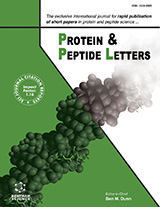
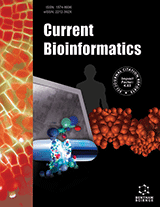
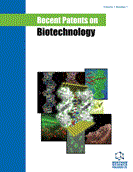
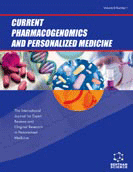
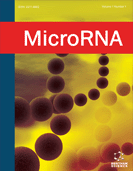
.jpeg)








